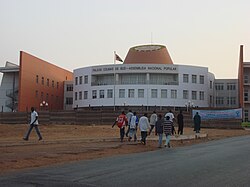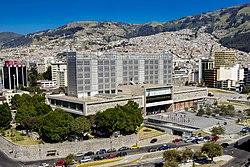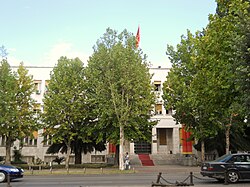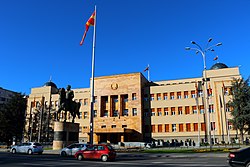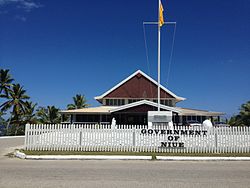| Country | Image | Building | Built | Notes |
|---|
| Afghanistan |  | National Assembly Building | 2015 | National Assembly (dissolved) [6] |
| Armenia |  | National Assembly Building | 1947 | National Assembly |
| Azerbaijan |  | National Assembly Building | 20th century | National Assembly |
| Bangladesh |  | Jatiyo Sangsad Bhaban | 1982 | |
| Brunei |  | Legislative Council Building | 2005 | Legislative Council of Brunei |
| Cambodia | | National Assembly Building | 2007 | National Assembly |
| China (People's Republic of China) |  | Great Hall of the People | 1959 | |
| East Timor |  | National Parliament Building | 2002 | National Parliament |
| Georgia |  | Georgian Parliament Building (Tbilisi) | 1953 | |
| India |  | Parliament House | 2023 | Old Parliament House was functional from 1927 to 2023. |
| Indonesia | 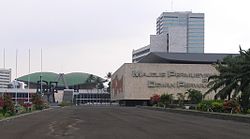 | DPR/MPR Building | 1965 | Planned as CONEFO Headquarter, but finished after CONEFO dissolved. Then repurposed as Parliamentary building complex in 1965, moved from the old Parliamentary building in Waterlooplein, now Lapangan Banteng, Jakarta. A new parliamentary building is being built in the new Capital and expected to be finished in 2028. [7] |
| Iran |  | Majlis Building | 2007 | See also former building |
| Iraq |  | Baghdad Convention Centre | 1980s | A new parliamentary building is planned. |
| Israel |  | Knesset | 1966 | |
| Japan |  | National Diet Building | 1936 | |
| Jordan |  | Jordanian Parliament | 1980 | Parliament of Jordan |
| Kazakhstan |  | Parliament House | 2004 | Parliament of Kazakhstan |
| Kuwait |  | Kuwait National Assembly Building | 1982 | Designed by Danish architect Jørn Utzon in 1972. |
| Kyrgyzstan |  | White House | 1985 | |
| Laos |  | National Assembly Building | 1990 | National Assembly of Laos |
| Lebanon |  | Parliament Building | 1933 | Parliament of Lebanon |
| Malaysia |  | Malaysian Houses of Parliament | 1963 | |
| Mongolia |  | Government Palace | 1954 | |
| Myanmar |  | Assembly of the Union | 2005 | |
| North Korea | 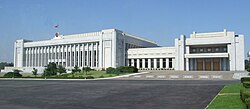 | Mansudae Assembly Hall | 1984 | |
| Oman |  | Council of Oman Building | 2013 | Council of Oman |
| Pakistan |  | Parliament House Building | 1988 | National Assembly, Senate |
| Philippines |  | Batasang Pambansa Complex | 1978 | House of Representatives; previously met at the Old Congress Building from 1926 to 1972, now the National Museum of Fine Arts. |
 | GSIS Building | 1997 | Senate; previously met at the Old Congress Building from 1926 to 1935, from 1949 to 1972, and from 1987 to 1997, now the National Museum of Fine Arts. A new building in planned. |
| Singapore |  | Parliament House | 1999 | |
| Sri Lanka |  | Parliament Building | 1982 | |
| South Korea |  | National Assembly Building | 1975 | |
| Taiwan (Republic of China) |  | Legislative Yuan Building | 1919 | Legislative Yuan |
| Tajikistan |  | Parliament House | | Supreme Assembly |
| Thailand |  | Sappaya-Sapasathan | 2019 | The National Assembly of Thailand (Senate and House of Representatives). From 1932 to 1974 the legislature met at the Ananta Samakhom Throne Hall, 1974 to 2018 at the Parliament House of Thailand and 2018 at the TOT Public Company Limited. |
| Turkey |  | Grand National Assembly Building | 1963 | |
| Uzbekistan |  | National Assembly Building | 2003 | Legislative Chamber of Uzbekistan |
| Vietnam |  | National Assembly House | 2009 | |















